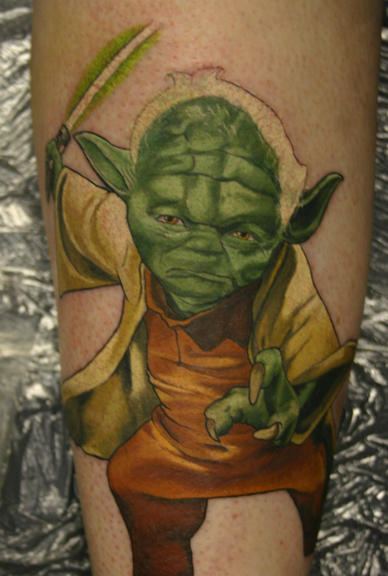The Risks of Contracting MRSA During Traditional or Permanent Cosmetic Tattooing
by: Terry Lively
There is a slight risk of MRSA with permanent cosmetics (cosmetic tattooing) and traditional tattooing, but it is a highly unlikely complication if the rigorous standards of hygiene required by the Centers for Disease Control and Prevention (CDC) are adhered to.
MRSA is a staph infection, correctly named Methicillin-Resistant Staphylococcus Aureus (staph), and is caused by the Staphylococcus aureus bacterium. Such bacteria can mutate in response to antibiotics, which is why antibiotics such as the various types of penicillin, should not be used excessively. MRSA developed in the early1960s as a strain of staph that resisted the antibiotic agents commonly used to treat it, and was amongst the first of the so-called ‘superbugs’ that could resist all but the strongest drugs.
It is interesting to note that about 30% of people carry the staph bacteria in their nose or on their skin. The bacteria have not made them ill, but are using such people as hosts on whom they cause no ill effects. It is possible, however, for such hosts to pass the bacteria on to others. Ordinary staphylococcus infections are passed on through cuts and grazes, and also by tattooing with unsterilized needles, or tattooing done in unclean environments. Our immune systems usually defeat the bacteria, however, with those whose immune systems have been weakened, such as the elderly, AIDs victims or those on anti-cancer treatment, these can cause serious infections.
About 10 years ago, MRSA began to appear in the general population, and is now referred to as CA-MRSA, or Community Acquired MRSA that can cause serious infections of the skin and of soft tissues, and it can also cause a serious form of pneumonia. Hospital Acquired, or HA-MRSA, is contracted during hospitalization, especially by those with a weakened immune system or suffering from burns or with surgical wounds. Long term care facilities are also prone to HA-MRSA as are those patients recently subjected to invasive procedures such as gastric tubes, catheterization or even by regular or cosmetic tattooing. The elderly are particularly susceptible.
There are two ways in which you can catch MRSA. The first is by contact with somebody who has the disease themselves or from a carrier (30% of population). Even skin contact can pass it on. The second is by touching any object that has been touched by a carrier or infected person, such as door handles, towels, faucets, furniture – in fact anything at all that has not been properly cleaned.
Since about a third of the population are carriers, it is little wonder that those ill in hospital are particularly prone to it since relatively few hospital visitors employ standards of personal hygiene necessary to control it. Frequent washing of hands with antiseptic or alcohol based sanitizers is one of the best defenses against MRSA (your own hands and also those of visitors, nurses and doctors), and you should also keep your personal items to yourself. Do not share razors, towels, etc., and in hospitals all equipment should be properly wiped down with hospital grade disinfectants, or sterilized in the case of surgical instruments.
MRSA first appears as small pimples that rapidly grow and develop into ulcers, boils, abscesses and carbuncles in which the skin has several ruptures leading to a pus filled cavity below. So how can it be treated if it is resistant to antibiotics? Well, luckily, it is not resistant (yet) to all antibiotics.
Linezoloid and vancomycin can still be used to kill them off, and some colonies of the nose and other mucous membranes can be killed off using a mupirocin antibiotic cream. It is generally best to test the actual bacteria that are infecting an individual to determine the most effective agent available, because they mutate so quickly that what worked last month might not this month.
It is also of critical importance to finish off any treatment given to you. Much of the resistance to antibiotics is due to a patient feeling better part of the way through their antibiotic course, and not finishing it. Although they feel better, the bacteria have not all been killed off and those remaining can develop a resistance against the type of antibiotic that it has been treated with. If you complete the course, none will survive to mutate.
So where do the various forms of tattooing figure in all of this? It has already been implied that MRSA can be contracted during tattooing, as it can during any technique that involves breaking the skin. However, just as injections and inoculations do not normally cause MRSA, neither does tattooing. The risk is exceptionally low if the correct standards of hygiene are employed, and if they are then you are many times less likely to contract MRSA through cosmetic tattooing than through a visit to your dentist or a hospital.
You are more likely to contract the disease through burns and scarring, than through the technique used to permanently hide them with cosmetic tattooing camouflage. The clothing and working environment employed in tattooing establishments are usually controlled by the local and state departments of health, as are the sterilization procedures for the instruments used. New needles must be used on each client, and they should also be sterilized before use. All other equipment used should also be sterilized, and disposable parts, such as the needles, should be disposed of safely after use.
Such premises should be licensed and regularly checked to ensure that the proper standards are being adhered to and that, for example, all technicians are wearing a new pair of gloves and other personal protective equipment for each client. The technician should be wearing clean clothing, and all other environmental aspects of the clinic that can pass on infections should be regularly cleaned with a disinfectant such as bleach. So question and keep an eye on your tattooist, and if these procedures are being followed, then you can feel safe from catching MRSA, or any blood borne pathogens such as hepatitis or AIDS, while undergoing traditional or cosmetic tattooing, also known as permanent cosmetic makeup.
What Is a Tattoo?
 Let's quickly remind ourselves exactly what a tattoo is: A tattoo is a permanent mark or design made on the body when pigment is inserted into the dermal layer of the skin through ruptures in the skin's top layer.
Let's quickly remind ourselves exactly what a tattoo is: A tattoo is a permanent mark or design made on the body when pigment is inserted into the dermal layer of the skin through ruptures in the skin's top layer.
Modern-day tattoos are applied by using an electric tattoo machine with needles that rapidly puncture the skin with an up and down motion not unlike that of a sewing machine.
Subscribe to:
Post Comments (Atom)
How Do Lasers Remove Tattoos?
 How Do Lasers Remove Tattoos
Lasers work by producing short pulses of intense light that pass harmlessly through the top layers of the skin to be selectively absorbed by the tattoo pigment. This laser energy causes the tattoo pigment to fragment into smaller particles that are then removed by the body's immune system. Researchers have determined which wavelengths of light to use and how to deliver the laser's output to best remove tattoo ink. (If you're wondering if the laser might also remove normal skin pigment, don't worry. The laser selectively targets the pigment of the tattoo without damaging the surrounding skin.)
How Do Lasers Remove Tattoos
Lasers work by producing short pulses of intense light that pass harmlessly through the top layers of the skin to be selectively absorbed by the tattoo pigment. This laser energy causes the tattoo pigment to fragment into smaller particles that are then removed by the body's immune system. Researchers have determined which wavelengths of light to use and how to deliver the laser's output to best remove tattoo ink. (If you're wondering if the laser might also remove normal skin pigment, don't worry. The laser selectively targets the pigment of the tattoo without damaging the surrounding skin.)
Sexy Tattoo for Women video
Tattoo inks
 Modern tattooing inks are carbon based pigments that have uses outside of commercial tattoo applications. Although the United States Food and Drug Administration technically requires premarket approval of pigments it has not actually approved the use of any ink or pigments for tattooing (because of a lack of resources for such relatively minor responsibilities).[citation needed] As of 2004 the FDA does perform studies to determine if the contents are possibly dangerous, and follow up with legal action if they find them to have disallowed contents, including traces of heavy metals (such as iron oxide) or other carcinogenic materials (see CA lawsuit). The first known study to characterize the composition of these pigments was started in 2005 at Northern Arizona University (Finley-Jones and Wagner).
The FDA expects local authorities to legislate and test tattoo pigments and inks made for the use of permanent cosmetics. In California, the state prohibits certain ingredients and pursues companies who fail to notify the consumer of the contents of tattoo pigments. Recently, the state of California sued nine pigment and ink manufacturers, requiring them to more adequately label their products.
Modern tattooing inks are carbon based pigments that have uses outside of commercial tattoo applications. Although the United States Food and Drug Administration technically requires premarket approval of pigments it has not actually approved the use of any ink or pigments for tattooing (because of a lack of resources for such relatively minor responsibilities).[citation needed] As of 2004 the FDA does perform studies to determine if the contents are possibly dangerous, and follow up with legal action if they find them to have disallowed contents, including traces of heavy metals (such as iron oxide) or other carcinogenic materials (see CA lawsuit). The first known study to characterize the composition of these pigments was started in 2005 at Northern Arizona University (Finley-Jones and Wagner).
The FDA expects local authorities to legislate and test tattoo pigments and inks made for the use of permanent cosmetics. In California, the state prohibits certain ingredients and pursues companies who fail to notify the consumer of the contents of tattoo pigments. Recently, the state of California sued nine pigment and ink manufacturers, requiring them to more adequately label their products.



















No comments:
Post a Comment